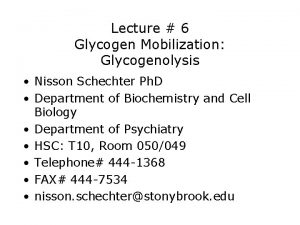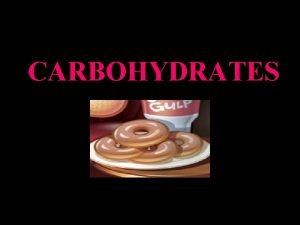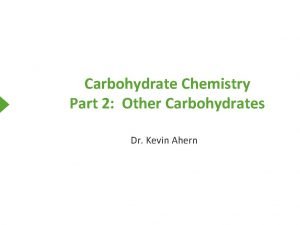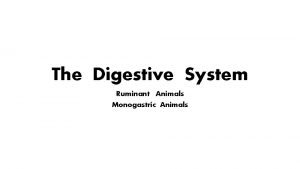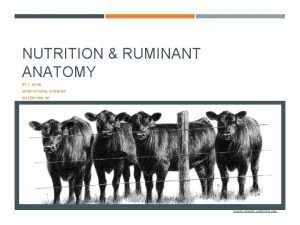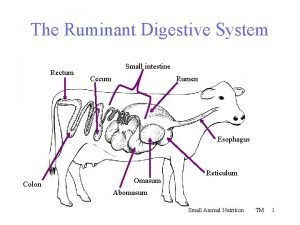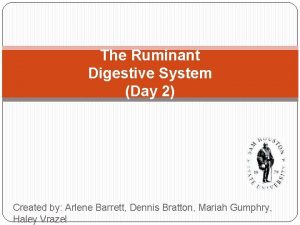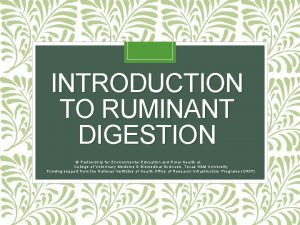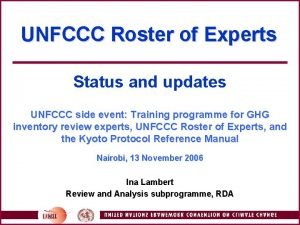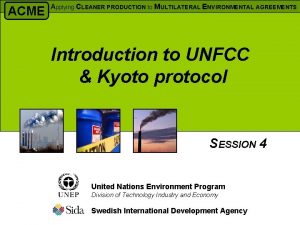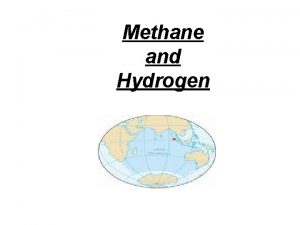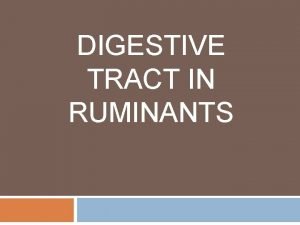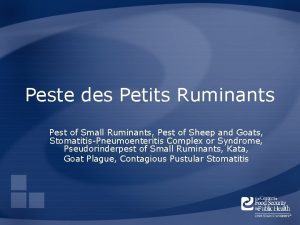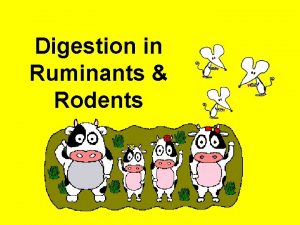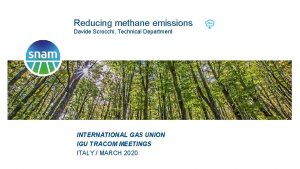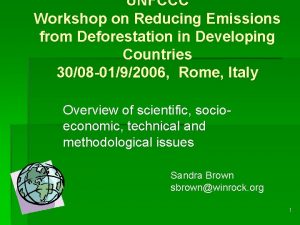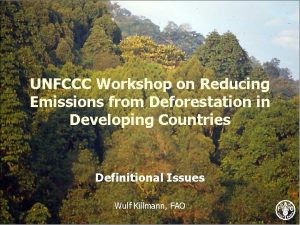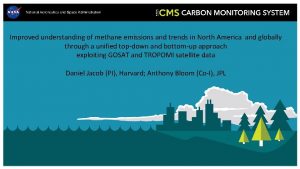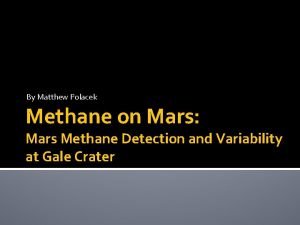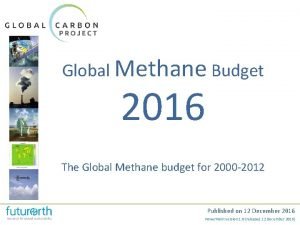Understanding and reducing methane emissions in ruminants UNFCCC













- Slides: 13

Understanding and reducing methane emissions in ruminants UNFCCC, Bonn 2007 Dr. Tommy Boland University College Dublin, Belfield, Dublin 4, Ireland

Irish situation n Ireland is obliged to limit GHG emissions to 13% above 1990 levels between 2008 and 2012 n Enteric fermentation from ruminants accounted for 13. 49% of GHG emissions in 2004 (EPA, 2006), accounting for over 53% of Irish agricultural emissions n In the governments strategy to reach our GHG target, the equivalent to a 10% reduction in our national herd would meet the required reduction in CH 4 from livestock n Grassland based ruminant production systems

Options n n Reduce animal numbers Increase animal productivity n n Concentrate composition Basal forage n n Increase concentrate proportion of the diet Increase energy efficiency of the animal Grass vs legume Proportion of grass in the diet Forage quality Methane inhibition

Dietary oils n n Methane emissions reduced by 23% per kg DMI by feeding 350 g/d (4. 8% DMI) coconut oil (Lovett et al. , 2003) Methane emissions reduced by 20% per kg DMI by feeding 250 g/d (2. 8% DMI) coconut oil (Jordan et al. , 2006 a) Methane emissions reduced by 37% per kg DMI by feeding 6% DMI of soya oil (Jordan et al. , 2006 b) Cost and sustainability an issue

Livestock number (‘ 000) change in Ireland 1990 2005 % change 90 -05 Total cattle 6100. 5 6330. 2 6191. 7 +1. 5% Total sheep 5863. 7 5056 4257 -13. 8%

Increased productivity/animal – dairy cows

Effect of age at slaughter on lifetime methane production 16. 5 % reduction in lifetime emissions and 12% reduction in emissions per kg carcass by going from a 30 to 25 month slaughter

Energetic efficiency n Selection for energetically efficient ruminants may lead to inherent improvements in ruminal fermentation processes and consequent reductions in methane (Herd, 2002) n Methane production negatively correlated with animal efficiency n Increased animal energetic efficiency decreases slaughter age and hence lifetime emissions

Energetic efficiency Feed efficiency – considerable genetic variation n Access to national pedigree test centre n Individual intake data n NFE (net feed efficiency) n RFI (residual feed intake) n Methane emissions measured at 6 -9 months and on forage based and grass based diets n Repeatability measured across a number of diet types n

Basal forage n Legumes vs grass n Fresh vs ensiled n Stage of maturity at grazing n Malic acid inclusion at 7. 5% of DMI to a 9% reduction (P < 0. 05) in CH 4 emissions per kg DMI led

Methane inhibition n Halogenated methane analogues n Statins n Individual fatty acids n Probiotics Rumen fermentation, methane production and microbial community structure analysis

Understanding methane formation in the rumen n Optimisation of mitigation practices and new strategies can be proposed for testing n In vitro gas production n Artificial rumen n In vivo studies n Change in microbial community structure

Future scenario n Short term n n Based on low methane feeding and management systems Long term Development/identification of rumen fermentation modifiers n Breeding of forages for reduced methane emissions n Breeding of animals for reduced methane emissions n
 Glycogen reducing end
Glycogen reducing end Carbohydrate classification
Carbohydrate classification What is reducing sugar
What is reducing sugar Reducing vs non reducing sugars
Reducing vs non reducing sugars Pig digestive system
Pig digestive system Ruminants
Ruminants Digestion microbienne chez les ruminants
Digestion microbienne chez les ruminants Digestive system of ruminants
Digestive system of ruminants Animal digestive system parts and functions
Animal digestive system parts and functions Ruminant digestive system
Ruminant digestive system Ruminant stomach
Ruminant stomach Digestive system of buffalo
Digestive system of buffalo Roster of experts unfccc
Roster of experts unfccc Unfccc annex 1 countries
Unfccc annex 1 countries
